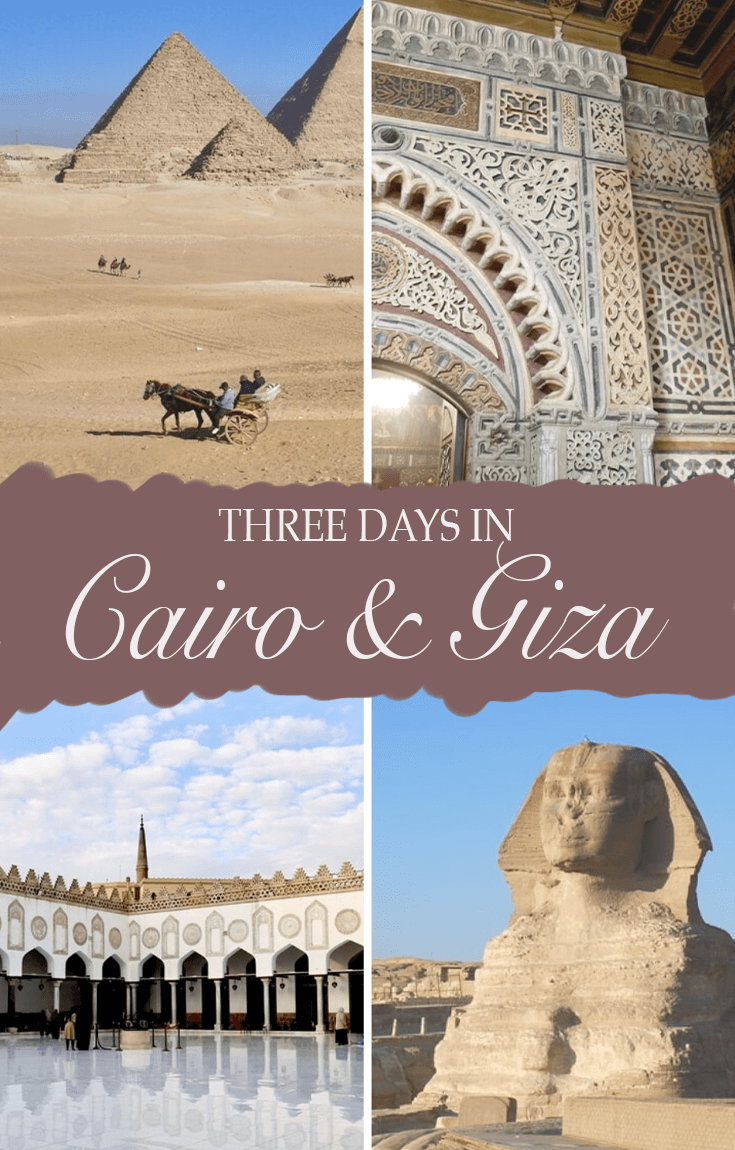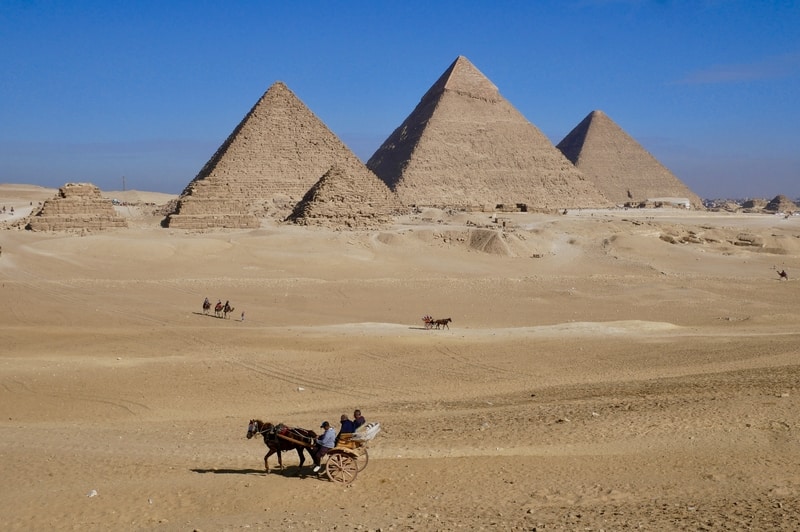
Cairo and the Pyramids: A Three Day Itinerary
Cairo is chaos at its most beautiful. It is also beauty as its most chaotic.
The city is a tapestry of history, a frenzy of activity, a cacophony of sounds. At any given moment in Cairo, the melodic wail of the call to prayer reverberates to the beat of donkey hoofs on pavement.
With its constant chaos and commotion, Egypt’s largest city is not a place that often woos travelers at first sight. Cairo can be brash and overbearing and downright frustrating.
Yet in all its grime and glory, Cairo is full of fascinating places to visit.
The city’s museum of antiquities is among the best in the world. Its ancient neighborhoods are a kaleidoscope of culture and tradition.
And to top it all off, at the city’s periphery stand the Great Egyptian Pyramids—rising resolutely out of the barren earth as if guarding Cairo from the vastness of the desert beyond.
THREE DAYS IN CAIRO AND THE PYRAMIDS
Cairo and its surroundings would take weeks—if not months—to properly explore. The metropolis is huge, with mosque-studded neighborhoods extending along the Nile and deep into the reaches of the desert.
Like most casual travelers, Dan and I had limited time to dedicate to the historical sites in and around Cairo. Thus, with only three days in Cairo, we split our itinerary between the city itself and the western plateau upon which its most iconic monuments were built.
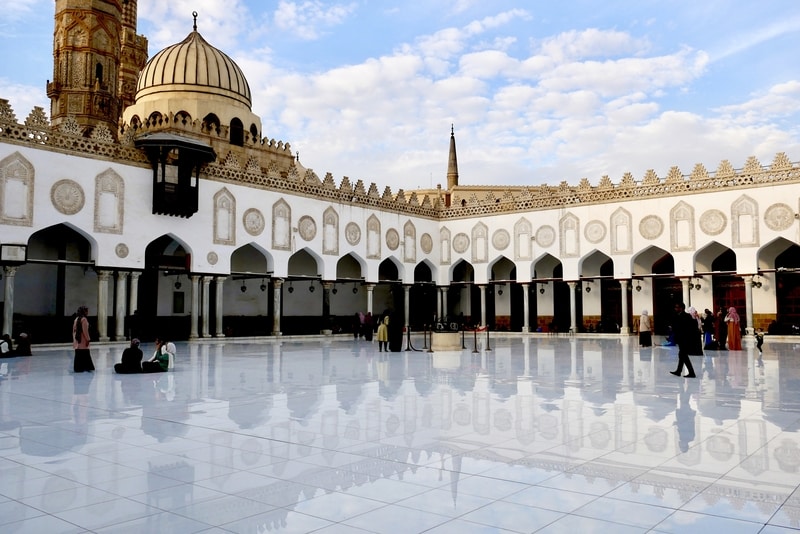
We began our trip to Cairo with a visit to the Pyramids of Dashur and Saqqara—ancient Egypt’s oldest remaining relics. From there, we spent our second day ogling at the world-famous monuments at Giza and marveling at ancient treasures in the National Museum of Cairo.
On the third and final day of our Cairo itinerary, we focused on the hodgepodge of glorious gems that lie beneath Cairo’s dense layer of pollution and smog.
DAY 1 ITINERARY: THE EGYPTIAN PYRAMIDS OF SAQQARA AND DASHUR
While most travelers with limited time might be tempted to skip the Pyramids of Saqqara and Dashur in favor of spending more time in Giza, Egypt’s older and less-renowned pyramids are not to be missed. In order to explore the archeological sites at our leisure, we hired a driver to pick us up in Cairo, take us to the Pyramids of Saqqara and Dashur, and drop us off in Giza before sunset.
At Dashur and Saqqara, we didn’t encounter long lines, or touts advertising camel rides. Nor did we feel as though we were constantly on the lookout for scams. Instead, visiting the smaller pyramids allowed us to dive headfirst into Ancient Egypt, while offering a more relaxed travel experience.
VISITING THE PYRAMIDS OF SAQQARA
Saqqara sits above the Nile Valley, west of Cairo. Covering a large 7km swath of desert, it is Egypt’s largest archaeological site, as well as its oldest. The Necropolis of Saqqara dates back to the Third Dynasty, nearly 5,000 years ago.
For history buffs and curious tourists interested in the origins of the Pyramids, visiting the area is a must.
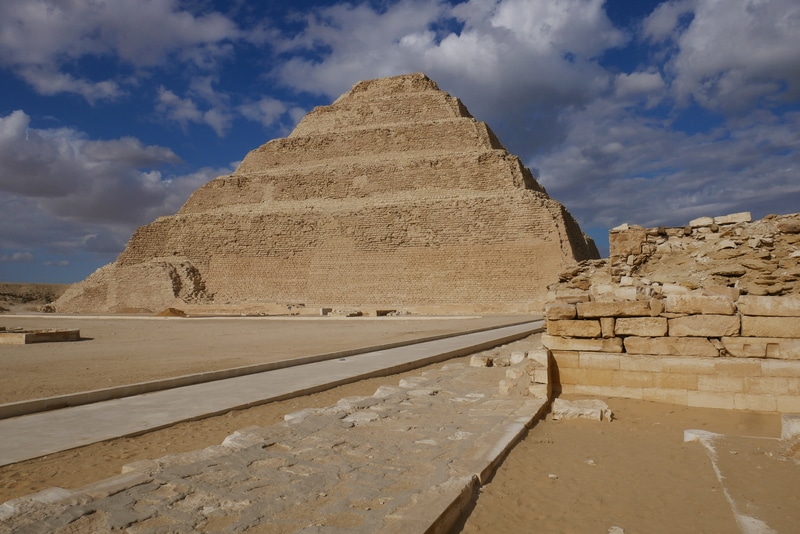
Due to limited time, our self-guided Saqqara tour included the Pyramids of Djoser and Teti. Yet travelers with more time may want to also visit the Tomb of Kagemni and the Mastaba of Ti (both accessible with the same entrance ticket).
Had we fully done our research before visiting Saqqara, we would have found the time to include the latter two sites into our Cairo itinerary as well.
-
THE PYRAMID OF DJOSER
The Pyramid of Djoser is the most significant archeological remain in the Saqqara Necropolis. As the world’s oldest royal tomb, it is the the foundation upon which later pyramids were built.
The Djoser Pyramid—also commonly known as the Step Pyramid—is distinct for its shape. It is not a symmetrical building, nor are its faces triangular. From its base, the structure rises toward the heavens like a rectangular layered wedding cake.
At the time of our visit, the pyramid’s interior was closed to tourists.
-
THE PYRAMID OF TETI
Though Dan and I knew nothing of Teti before our visit, the unassuming pyramid ended up being a highlight of our Cairo itinerary.
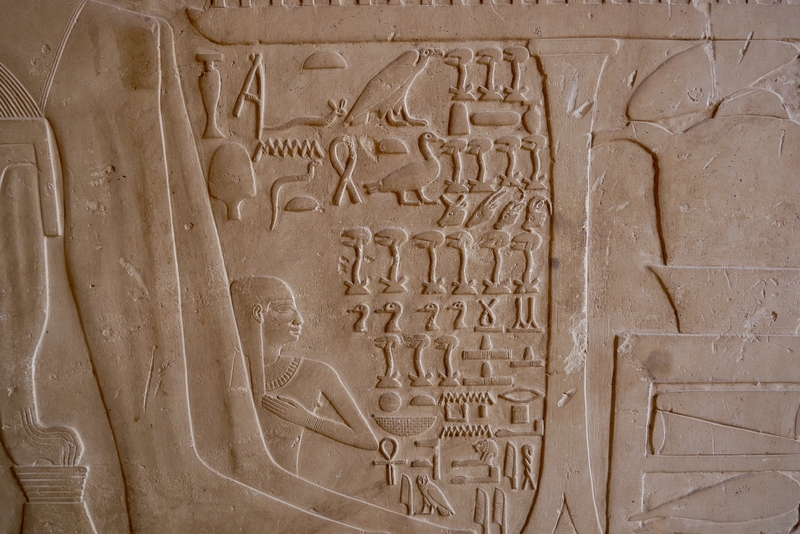
From its exterior, the Pyramid of Teti appears to be a modest pile of rocks in severe disrepair. It looks to be in such poor shape, in fact, that Dan and I almost chose not to enter.
But inside, the Pyramid of Teti tells an entirely different story. The interior of the Teti Pyramid is visually striking. Unlike other pyramids that contain interior chambers devoid of embellishments, the Teti relic remains adorned with intricate hieroglyphs that are impeccably preserved.
VISITING THE DASHUR PYRAMIDS
The Pyramids of Dashur are not the oldest or largest pyramids in Egypt, but they are certainly worth including in a three day itinerary to Cairo and Giza.
The Dashur Pyramids, dating back to Pharaoh Sneferu’s reign in 2613BC, reveal the evolution and perfection of the Egyptian pyramid form. The two main places to see within the Dashur Archeological Zone are the Bent Pyramid and the Red Pyramid.
-
THE BENT PYRAMID
The Bent Pyramid clearly indicates a transition from the traditional “step” pyramid design. It is also credited with being the first smooth-sided pyramid in Ancient Egypt.
In attempting to create a true smooth-sided pyramid, Sneferu’s architects constructed the pyramid’s walls at a 54 degree, inward-leaning angle. When the structure began showing signs of instability, however, the builders changed its slope to 43 degrees.
To this day, the Bent Pyramid rises out of the sand with a deformed structure that is markedly distinct.
The interior of the Bent Pyramid is closed to visitors.
-
THE RED PYRAMID
The world’s oldest true pyramid, the Red Pyramid, derives its name from the red tones of its weathered limestone. It appears that, in constructing the Red Pyramid, Snefaru’s architects learned from their mistakes and succeeded in building the world’s first symmetrical structure.
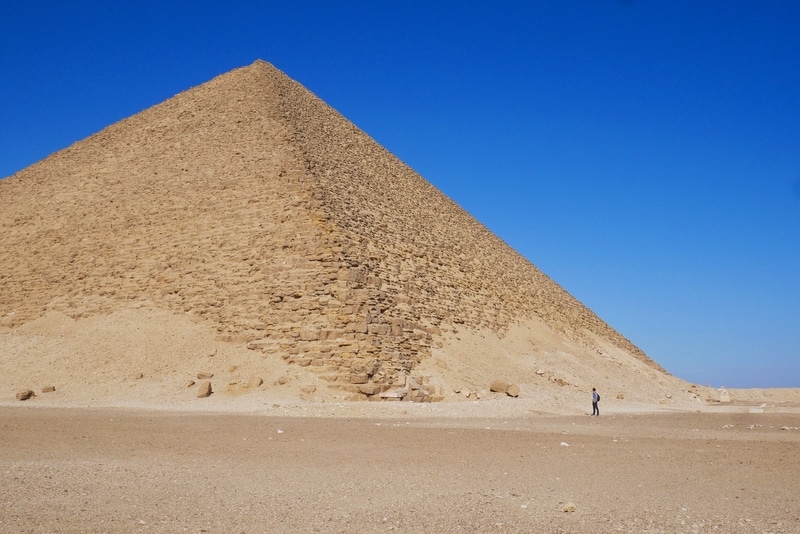
Visitors can enter the Red Pyramid for a fraction of the cost of entering the Great Pyramid of Giza.
The entrance reveals a 125-step claustrophobia-inducing passageway that leads to two antechambers with high vaulted ceilings. For travelers who don’t want to pay the exorbitant fee of entering the Great Pyramid of Giza, the Red Pyramid is a fantastic alternative.
DISCOVERING THE RELICS OF ANCIENT MEMPHIS
While not a pyramid, the ancient city of Memphis is commonly included in tours of the smaller and lesser-known pyramids outside of Giza.
Located at the entrance to the Nile River Valley near the Giza Plateau, Memphis was one of the oldest and most important cities in Ancient Egypt. It served as the capital of Egypt during the Old Kingdom, while the Great Pyramids were being built.
Today, not much remains of the old city. A museum housing a sphinx, a handful of carved stones, and a stunning Colossus of Ramses II can be visited upon paying the 60 pound entrance fee.
ENJOYING THE GIZA PYRAMIDS FROM A ROOFTOP HOTEL
Dan and I spent the night in Giza in order to fully appreciate the beauty of the pyramids at night and in the early morning. If time permits, I wholeheartedly recommend you do the same. A host of hotels in Giza compete for nearly-unobstructed views of the three triangular structures that loom above town.
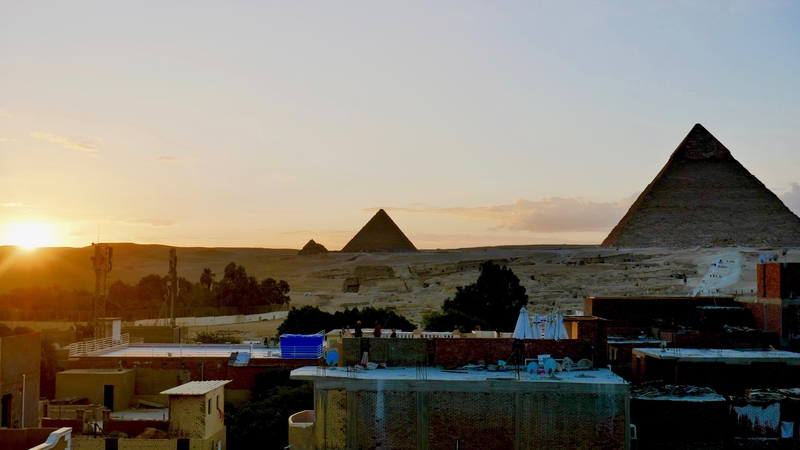
We stayed at the Horus Guesthouse and enjoyed a favorably-priced pyramid-view room with a central location near the archeological site’s East Entrance. For travelers seeking a step up in luxury, the Mariott Mena and Meridian Pyramids Hotel offer pools, gardens, and comfortable amenities with a view.
CAIRO ITINERARY DAY 2: THE PYRAMIDS OF GIZA AND THE NATIONAL MUSEUM
Though you’ve probably seen the images a thousand times before, nothing can compare to a face-to-face encounter with the impeccable geometry and grandeur of the Egyptian Pyramids.
Simply put, the Pyramids of Giza are extraordinary. They are a hyperbole of magnificence and craftsmanship. Alongside the great ruins of Angkor Wat in Cambodia, the Moai on Easter Island, and the Nabetean Ruins of Petra in Jordan, the destination remains one of the most mysterious and iconic on famous landmarks on Earth.
VISITING THE GREAT GIZA PYRAMIDS
Dating back nearly 6,000 years, the iconic Pyramids of Giza have captured the imaginations of travelers and historians for millennia. But their widespread appeal comes at a price. They are full of crowds, and full of hassle.
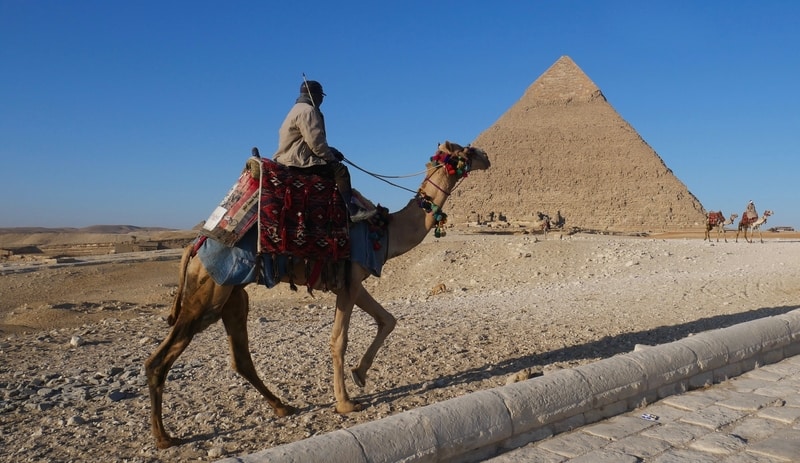
As Dan and I admired the last surviving wonder of the ancient world, we were accosted by touts at every step of the way. We declined seemingly thousands of requests to ride camels, and deflected a number of scams by people claiming to be security guards.
And still, visiting the Pyramids of Giza is an Egyptian experience second to none.
-
THE THREE PYRAMIDS OF GIZA
The Giza Necropolis consists of three main pyramids—Khufu, Khafre and Menkaure—and a number of smaller associated pyramids. Dan and I spent most of the morning wandering around the grounds of the archeological site. Our decision to stay the night in Giza meant that we were able to beat the crowds and arrive at the entrance gates as soon as they opened, at 8:00am.
Though we had already entered two pyramids the previous day, we chose to purchase tickets to the interior of the Great Khufu Pyramid.
The Great Pyramid costs roughly $20 to enter. And though its interior is more crowded, more more expensive, and less aesthetically interesting than the that of the pyramids in Dashur and Saqqara, I’m glad I decided to fork over the money and channel my inner Indiana Jones.
-
THE GREAT SPHINX AND VALLEY TEMPLE
If the Pyramids of Giza are the universal symbol of Egypt, then the Sphinx is runner-up. Carved out of a single hunk of rock, the mythical lion-man statue stands guard over the Great Pyramid Complex. The Sphinx is the oldest known monumental sculpture in Egypt, dating back to circa 2500BC.
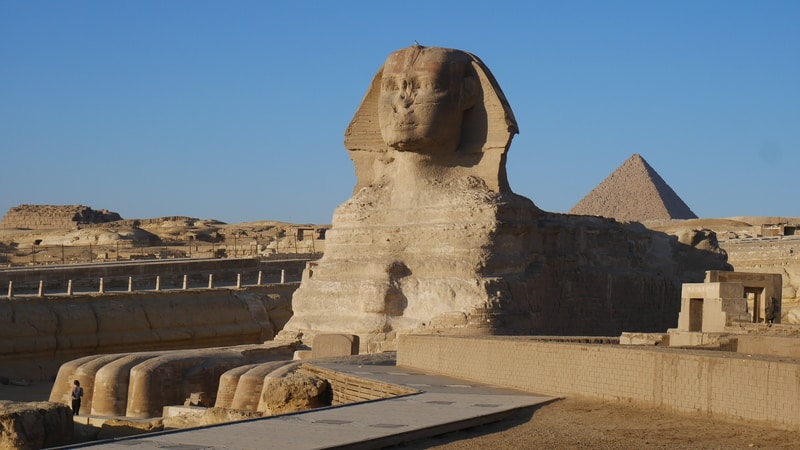
Many travelers have expressed surprise at the Sphinx’s small size relative to the Pyramids (it is often photographed in the foreground, where perspective is skewed).
Strangely, upon seeing the Great Sphinx, my reaction was the opposite.
-
BEST VIEWS OF THE PYRAMIDS
For all-encompassing views of the three Pyramids, most tour buses stop along the road that runs behind the archeological site. Beyond the road, a pyramid alignment viewpoint boasts superior panoramas of the structures and their surroundings.
Camel tours often lead visitors to the alignment viewpoint, but walking only takes about fifteen minutes from the Menkaure Pyramid.

Whether you travel by horse, by camel, or on foot, I recommend you include the viewpoint in your itinerary. The vistas are simply breathtaking.
VISITING THE NATIONAL MUSEUM
After an unforgettable morning in Giza, Dan and I took an Uber back to Cairo and spent an afternoon at the Egyptian National Museum near Tahrir Square. The museum is among the best in the world—rivaling the likes of the Louvre, the British National Museum and the Vatican Museums.
We spent two hours wandering the museum’s disorganized jumble of archeological treasures and admiring the King Tut Exhibit. Had the museum not been scheduled to close at 5pm, we could have easily stayed longer.
ITINERARY DAY 3: EXPLORING THE BEST OF CAIRO IN ONE DAY
At first glance, Cairo is dirty, congested and polluted. The city lies under a thick cloud of smog, its charms slowly revealed to travelers as they dodge honking cars and peel back the layers of grime and pollution.
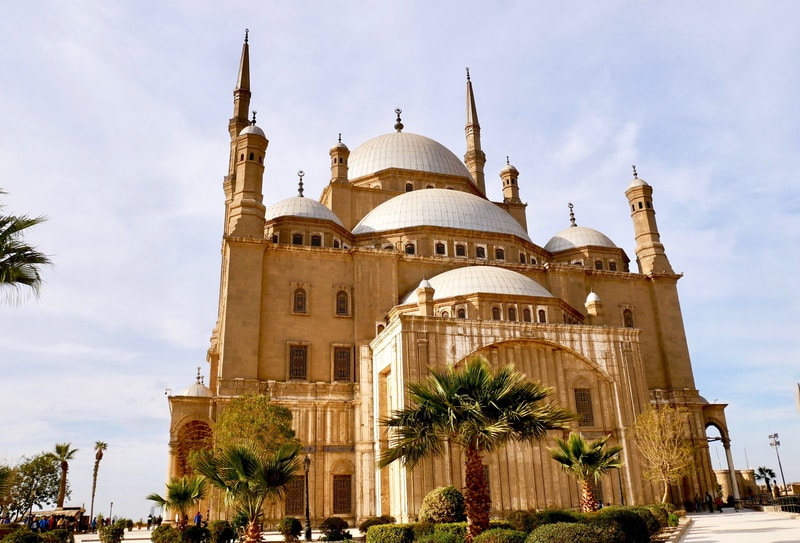
While I dedicated three days of my Egypt trip to Cairo, I only spent a day and a half in the city itself. But Cairo undoubtedly deserves more time. The city is replete with architectural gems, archeological wonders and culinary delights (we particularly loved eating at Fasahet Soumaya and the Naguib Mahfouz Cafe).
Among the plethora of things to see and do in Cairo, highlights include visits to the Coptic Quarter, the Citadel, and the Islamic Quarter.
VISITING THE COPTIC QUARTER IN CAIRO
Even in a city as chaotic as Cairo, there exist oases of tranquility and calm. Coptic Cairo is a fascinating counterpoint to the rest of the city. Distinguished for being the oldest neighborhood in Cairo and the heart of Egypt’s Coptic Christian community, the area is a car-free jumble of ancient churches and monasteries.
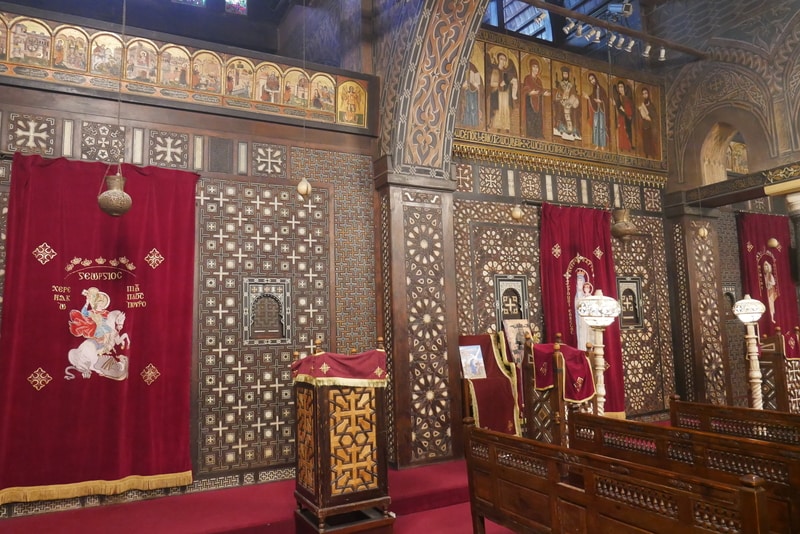
Over two thousand years ago, Coptic Cairo sat along the Nile. It was a strategic point around which the city began to flourish and grow.
Over millennia, the course of the river has changed. And today, while the Nile has shifted several hundred meters to the west, this historic district houses several of Cairo’s most significant attractions.
-
THE CHURCH OF ST GEORGE
The Church of St George was the first stop on our self-guided walking tour of Coptic Cairo. The church stands directly in front of the Mar Gigris Metro Station, adjacent to the St George Monastery. The massive building is the principal Greek Orthodox church of Egypt. Inside, sunbeams filter through stained glass windows and illuminate a spacious incense-filled room.
The Church of St. George was built in the 10th century, but a fire destroyed its original structure. The present church dates to 1904.
-
THE HANGING CHURCH
From the Complex of St George, a descending staircase leads to a labyrinth of church-lined streets below. The most famous of these churches is the Hanging Church—an architectural masterpiece and the seat of the Coptic Orthodox Pope of Alexandria.
The stunning church stands above the gatehouse of an ancient Roman Fortress. Its nave rests above a passageway, as if suspended.
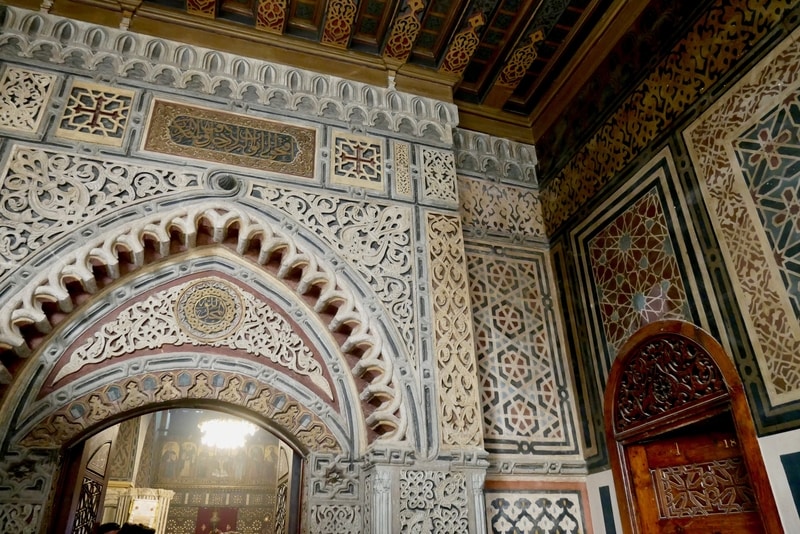
The Hanging Church contains a courtyard adorned with modern biblical designs. Inside, its 110 icons date back to the eighth century.
I particularly loved the Hanging Church’s mosque-like floral motifs and intricate decorations.
-
THE BEN EZRA SYNAGOGUE
According to local folklore, the Ben Ezra Synagogue sits at the site in which a pharaoh’s daughter found baby Moses in a basket. Little is known about the original building, other than the fact that it used to be a church. Motifs reminiscent to those of the nearby mosques and churches adorn the synagogue’s interior.
Unfortunately, photography of the Ben Ezra Synagogue is not permitted.
SOAKING IN THE VIEWS FROM THE CAIRO CITADEL
Towering over the city’s eastern edge, the Cairo Citadel is one of the top places to visit in Cairo. The citadel—founded by Saladin in 1176 as a fortification against the Crusaders—was home to Egypt’s rulers for 700 years. What remains today is a collection of holy mosques, several palaces (most of which were under remodel when we visited) and terraces with superb city views.
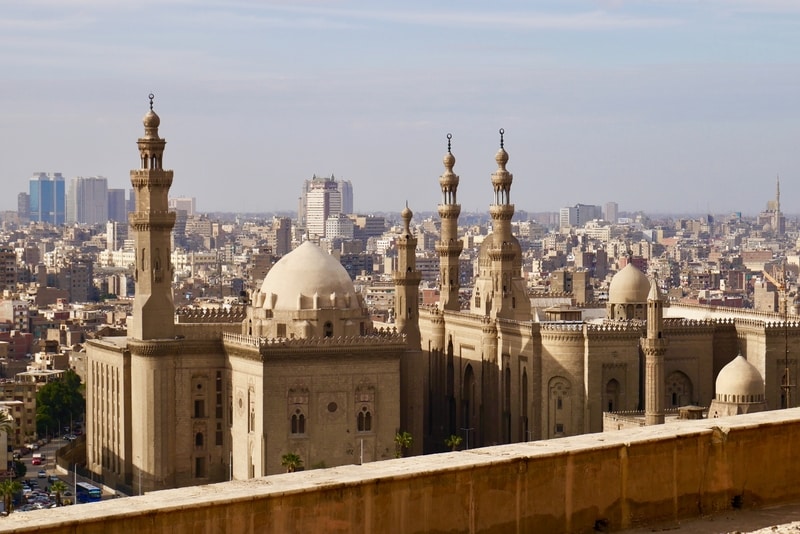
Even through the smog, we could see the Giza Pyramids piercing the sky in the far distance.
-
THE MOHAMMED ALI MOSQUE
Employing classic Ottoman architecture, the alabaster-white mosque within the Citadel is among the most significant religious monuments in Cairo. The mosque’s interior boasts twinkling chandeliers and an intricately adorned minbar. Mohammed Ali’s tomb lies within the mosque.
GETTING LOST IN ISLAMIC CAIRO
Islamic Cairo is a bit of a misnomer for the colorful and character-filled district that lies near the Al Azhar Mosque. After all, nearly all of Cairo’s neighborhoods are predominantly Muslim. Still, Islamic Cairo is distinct. The neighborhood boasts some of the most important buildings and institutions in Islam, as well as some of the city’s best restaurants and shopping streets.
-
THE KHAN AL KHALIL MARKET
At the heart of Islamic Cairo lies the colorful Khan al Khalil Market. Here, the frenzy of activity comes less from honking car horns and more from the street vendors attempting to lure passersby into their shops.
The narrow car-free lanes of Khan Al Khalili comprise one of the largest and most renowned souks in the Arab world. This agglomeration of shops stocks everything from soap powder, to spices, to tacky alabaster pyramids and figurines of pharaohs.
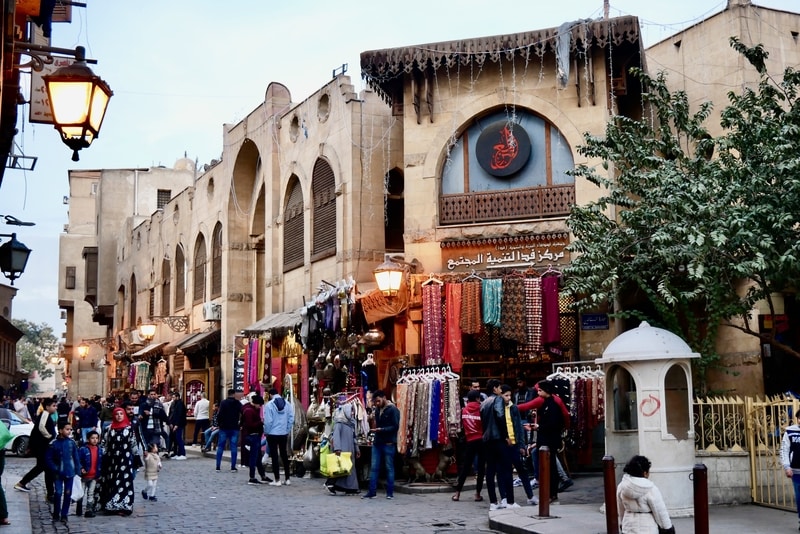
Unfortunately, we planned our visit to Islamic Cairo on a Sunday—the day that most shops in the market are closed. As a result, the sprawling bazaar was uncharacteristically quiet and laid back.
Still, enough stores and shops were open for us to get a feel for the area.
****
Despite its renown and widespread appeal, Cairo is not an easy city. During my visit to Cairo, the unfettered frenzy, the horrific traffic, and the thick black smog, nearly drove me to my wits end.
But while Cairo doesn’t always seduce visitors at first sight, it is the type of place that slowly sucks you in—revealing, little by little, a city that is as beautiful as it is dirty and as captivating as it is confusing.
Cairo may impair your hearing, blacken your lungs, and leave you craving a bit of quiet and calm, but these hassles only seem like minor obstacles overall.
For there are few things more exhilarating than standing in front of the last remaining Ancient Wonder and visiting a city that Arabs call Umm al Dunya—the Mother of the World.
________________________________
Was this Three Day Cairo Itinerary Useful? Pin It!
